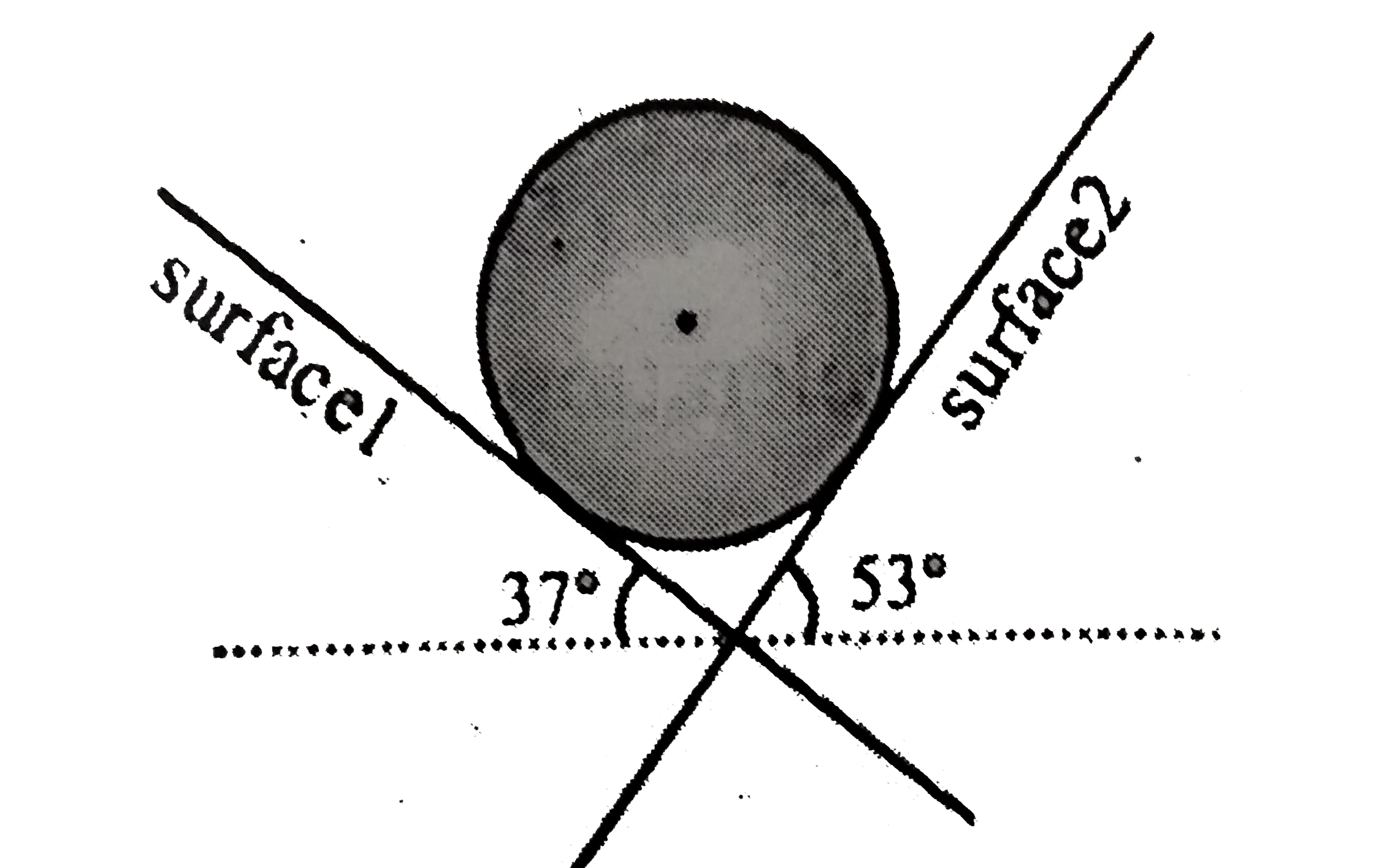A sphere of mass 10 kg is placed in equibrium in a V shaped groove plane made of two smooth surface 1 and 2 as shown in figure. (g=10ms−2)


The correct Answer is:A-R B-Q C-S D-P
Step by step video & image solution for A sphere of mass 10 kg is placed in equibrium in a V shaped groove plane made of two smooth surface 1 and 2 as shown in figure. (g=10ms^(-2)) by Physics experts to help you in doubts & scoring excellent marks in Class 12 exams.
Updated on:21/07/2023Topper's Solved these Questions
- NEWTON'S LAWS OF MOTION & FRICTIONBOOK - ALLENCHAPTER - NEWTON'S LAWS OF MOTION & FRICTIONEXERCISE - EXERCISE (O-2)
31 Videos
- NEWTON'S LAWS OF MOTION & FRICTIONBOOK - ALLENCHAPTER - NEWTON'S LAWS OF MOTION & FRICTIONEXERCISE - EXERCISE (JM)
6 Videos
- NEWTON'S LAWS OF MOTION & FRICTIONBOOK - ALLENCHAPTER - NEWTON'S LAWS OF MOTION & FRICTIONEXERCISE - EXERCISE (S-2)
9 Videos
- MOTION IN A PALNEBOOK - ALLENCHAPTER - MOTION IN A PALNEEXERCISE - SOLVED EXAMPLE
28 Videos
- NEWTONS LAWS OF MOTIONBOOK - ALLENCHAPTER - NEWTONS LAWS OF MOTIONEXERCISE - EXERCISE-III
28 Videos
Similar Questions
Knowledge Check
Two blocks of masses 10 kg and 20 kg are connected by a massless string and are placed on a smooth horizontal surface as shown in the figure. If a force F=600 N is applied to 10 kg block, then the tension in the string is
 A100NB200NC300ND400N
A100NB200NC300ND400NTwo blocks A and B of masses 10 kg and 15 kg are placed in contact with each other rest on a rough horizontal surface as shown in the figure. The coefficient of friction between the blocks and surface is 0.2. A horizontal force of 200 N is applied to block A. The acceleration of the system is (Take g=10ms−2)
 A4ms−2B6ms−2C8ms−2D10ms−2
A4ms−2B6ms−2C8ms−2D10ms−2
A bolck of mass m =2 kg is placed on a plank of mass M = 10 kg, which is placed on a smooth horizontal plane as shown in the figure. The coefficient of friction between the block and the plank is μ=13. If a horizontal force F is applied on the plank, then the maximum value of F for which the block and the plank move together is (g=10m/s2)

View SolutionA smooth sphere (mass 10kg. negligible radius) rolls on a smooth curved surface from the point A with a speed of 10m/s as shown in figure. The sphere reaches the point D passing through point B. If the ground is taken as reference . Then [ Take g=10m/s2]

The total energy of the sphere at the point A.
View SolutionA smooth sphere ( mass 10kg. negligible radius ) rolls on a smooth curved surface from the point A with a speed of 10m/s as shown in figure. The sphere reaches the point D passing through point B. If the ground is taken as reference . Then [ Take g=10m/s2]

Will the sphere go beyond D ?
View SolutionA smooth sphere ( mass 10kg. negligible radius ) rolls on a smooth curved surface from the point A with a speed of 10m/s as shown in figure. The sphere reaches the point D passing through point B. If the ground is taken as reference . Then [ Take g=10m/s2]

The kinetic energy at D,
View SolutionA smooth sphere ( mass 10kg. negligible radius ) rolls on a smooth curved surface from the point A with a speed of 10m/s as shown in figure. The sphere reaches the point D passing through point B. If the ground is taken as reference . Then [ Take g=10m/s2]

The kinetic energy at C
View SolutionA solid sphere of mass 2 kg rolls up a 30∘ incline with an initial speed of 10ms−1. The maximum height reached by the sphere is (g=10ms−2)
View Solution

